#Emigre: Pin-Up Edition
Explore tagged Tumblr posts
Text
Emigre: Pin-Up Edition Process Update!
How it started:





How it's going: (below cut, pin-up typical content ahead)





Feel free to share any feedback or thoughts! <3
Working Titles: 😘😂
'Nothing to Wear' [Dagmar]
'Light Reading' [Shral]
'You May Approach' [Thoris]
'Bedding Down for the Night' [Vrath]
'Bubbles & Foam' [Thelen]
#emigre by indignantlemur#Emigre: Pin-Up Edition#art process#silly working titles#The Thoris one got away from me...#the notes help I swear!#I've been debating simplifying how I draw Andorian antennae but I can't decide if it's a good idea or not#CW: suggestive#cw: partial nudity#andorian#andorians#digital art#dagmar gunnarssen#vilashral of clan hrisvalar#anlenthoris th'kor#thelen of clan sannev#jhelvrath of clan tha'an#art progress
28 notes
·
View notes
Text


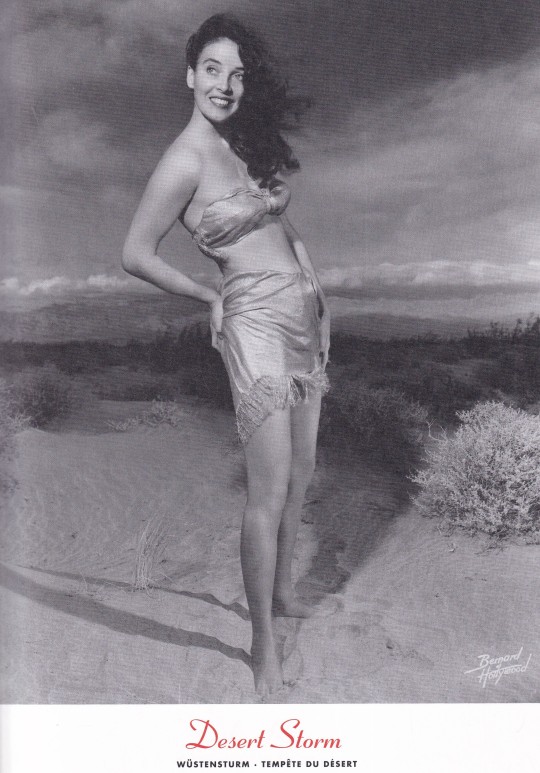



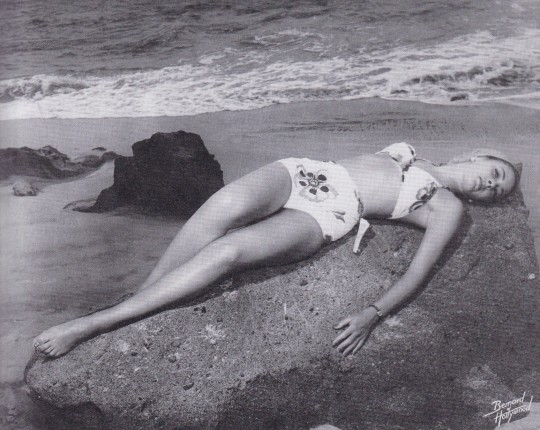
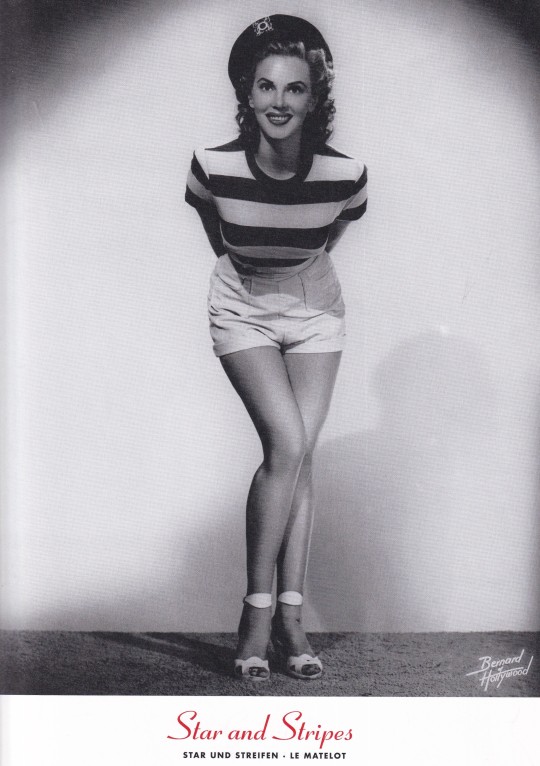


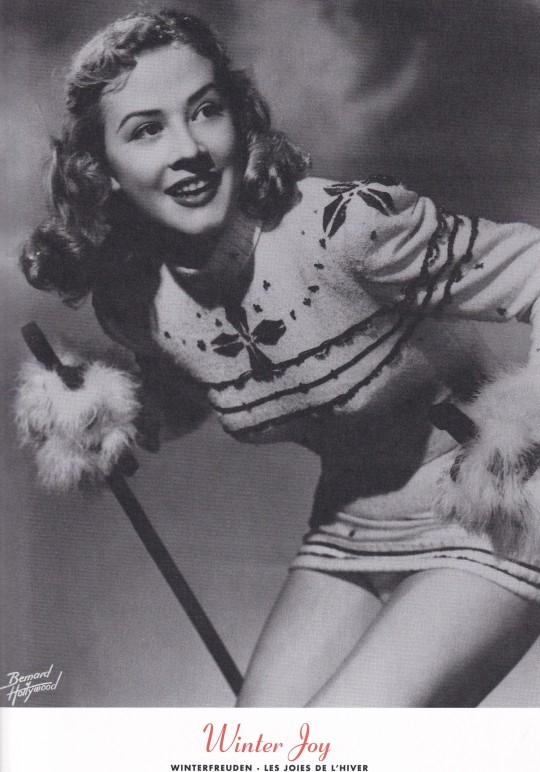
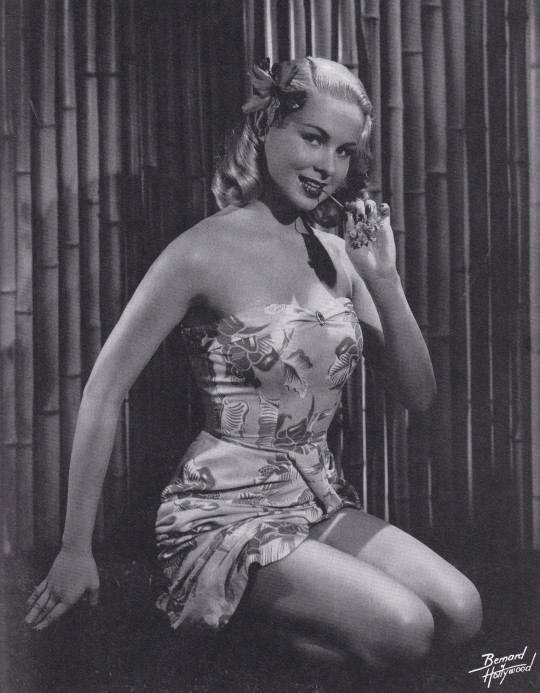





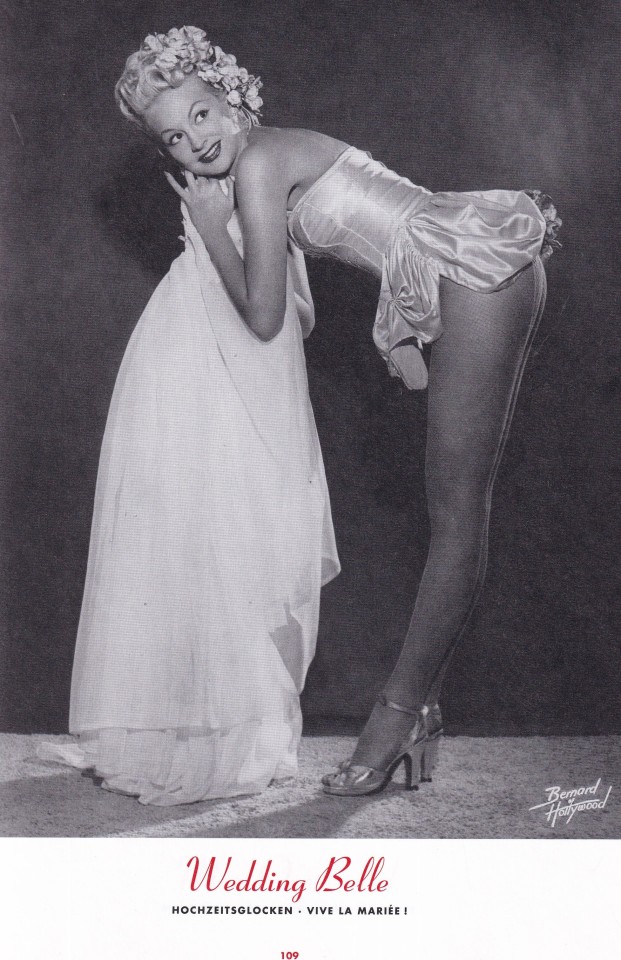
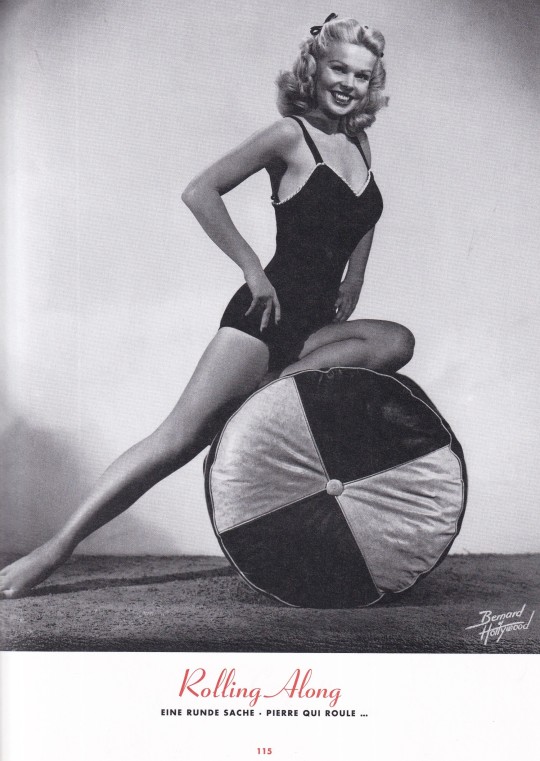


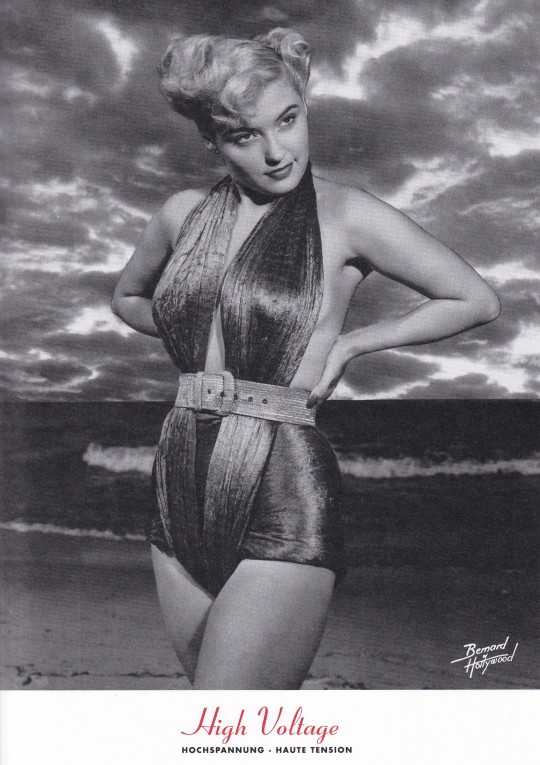

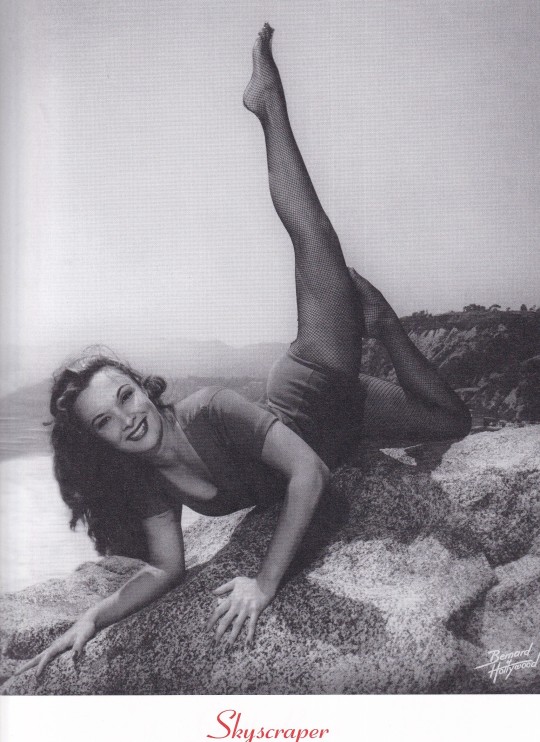

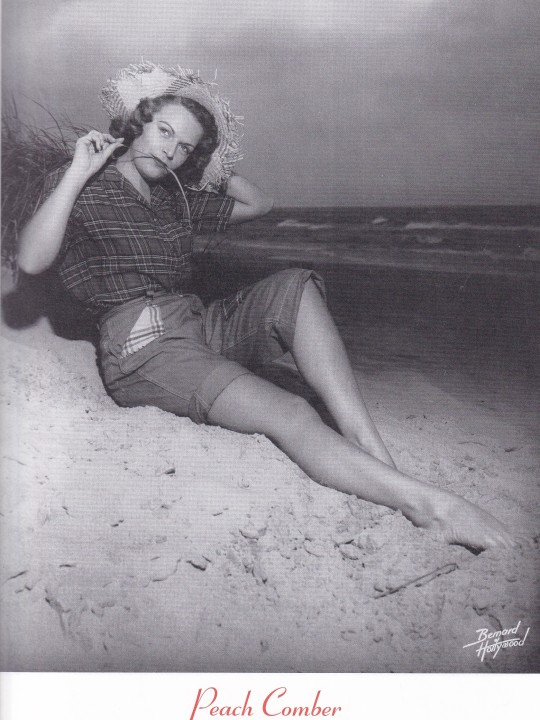
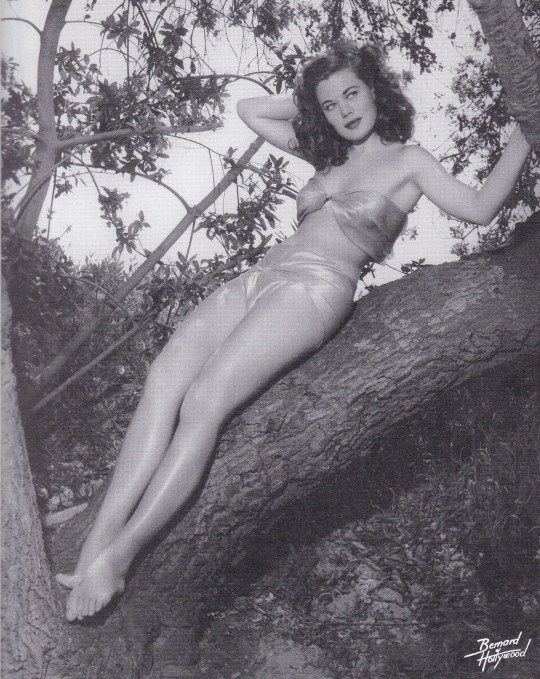
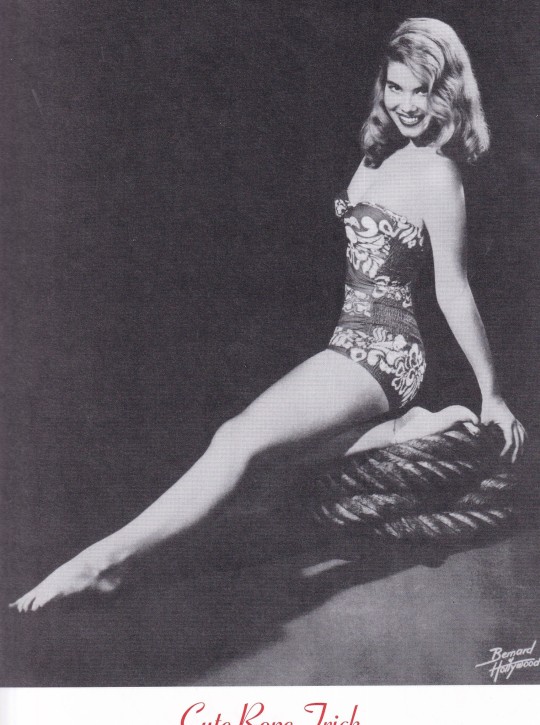


Bernard of Hollywood Pin-ups
Guide to Pin-up Photography
Evergreen , imprint of Taschen, Köln 1999, 160 pages, paperback, 23x30cm, ISBN 3-8228-7172-9
euro 30,00
email if you want to buy [email protected]
A new, trilingual edition (text in English, French and German) of a "how-to" book on pin-up photography by the guy who virtually invented the technique, originally published by him under his own imprint in 1950, under the title "Pin-Ups: A Step Beyond." (The rear cover photo depicts a relaxed and bemused Robert Mitchum perusing a copy of the original publication.) Bruno Bernard (1912-1987) was a German-born emigre who only took up photography shortly after arriving in Los Angeles (fleeing Nazi Germany) in 1937. Although he had no formal training in photography, he gained a reputation during the 1940s for his "posed candid" style of photographing beautiful actresses (including a young Marilyin Monroe), and eventually started billing himself as Bernard of Hollywood.
31/05/25
0 notes
Text
Von Closen family dates
1. “Schwarzwald” is not specific about Wilhelm von Closen’s age, only that his father (Albrecht’s brother) died “in his fourteenth year.” Since the events of the letter took place in 1815, Wilhelm must’ve been born before 1800.
2. The next named von Closen is Elsa, who emigrated to England in 1908 and married Michael Keay in 1920. Assuming she wasn’t a child bride, she was born in or around 1900; at minimum she’s Wilhelm’s granddaughter, more likely a great-granddaughter.
3. We are told Elsa and Michael had one daughter, Mary Keay, in 1924. But...
4. ... in “First Edition,” Mary Keay herself says she was 9 when she acquired her first Leitner in 1955, meaning she was born in 1945 or 1946. She doesn’t name either of her parents, though, so there’s a chance that we’re dealing with two generations of Marys. (Maries? Plurals are hard.) That is, Elsa and Michael have a daughter, Mary Senior, in 1924, who grows up to have a daughter of her own, Mary Junior, in 1946.
5. Observers seem to have a hard time pinning down Gerard Keay’s age, but he was “a teenager” in 2002 (”Old Passages”) and then suddenly “mid-thirties” by 2012 (”First Aid). That could give him a birth year anywhere between 1983 and 1988, for generous interpretations of “teenager,” but probably skewing older.
(spoiler for 127 under cut)
6. Albrecht von Closen says in “Schwarzwald” that he and Carla had no children of their own, which is why they were so close to Wilhelm. But in “Remains To Be Seen” Dr. Fanshawe mentions that Albrecht’s sons were at school. So some time between 1815 and 1831 he .... acquired ... at least two boys, who by April of ‘31 were old enough to be in a boarding school, and Carla died of a nonspecific “fever” in the same interval.
Jon does not end this this episode with any geneological insights, and didn’t mention any offspring of Albrecht’s in the follow-up on “Schwarzwald” -- it might be they just didn’t look for any, or it might be that those “sons” ended up with a surname other than von Closen. Like, say, von Schwarzwald? Which would be anglicized as ... Blackwood?
Yeah, it’s a crack theory for now, but it also means that Gerard “None More Goth” Keay and Martin “Softest Boy” Blackwood are, technically, seventh cousins (plus or minus a remove). Close enough to be funny but still far enough apart to ship them with a clear conscience!
47 notes
·
View notes
Text
Star Wars: The Essential Guide to Warfare Author’s Cut, Part 2 – Ancient Coruscant
THE BATTALIONS OF ZHELL AND THE TAUNGS
Jason Fry: As published, Warfare offers a translation of the best-known section of Dha Werda Verda, an epic about the ancient battle between the Zhell and the Taungs. This “modern” exploration of the Zhell and Taungs was fun, and I liked how it connected the ancient era with the Mandalorians and the Empire. But it risked feeling redundant — and with Warfare way too long already, it was a logical cut.
Erich Schoeneweiss: I think it’s important to note the circumstances that led to some of the edits we had to make. The last thing I wanted to do was cut anything Jason wrote, but he was contracted to deliver a manuscript at a specific word count and far exceeded that. If this had been a novel that wouldn’t have been as a big an issue, but the Essential Guides are illustrated full-color books. We have a tight budget and set of book specifications we work with, and page count is one of those key specs. A longer manuscript means more pages, which means the book costs more to produce. Jason made some edits on his own and submitted the manuscript knowing we would have to make some more. It was a collaborative effort in deciding on the additional cuts, and this is one of them.
Reprinted From Imperial Center Today, 2 ABY:
A LONG TIME AGO…
The Zhell and the Taungs Are Names to Conjure By, But the Truth About These Long-Lost Combatants Is Hard to Pin Down
By Eschul Shaywa
The Zhell and the Taungs have been powerful names here on Imperial Center nearly as long as civilization has existed on our planet — and that’s an awfully long time. Their names adorn ancient neighborhoods that claim some connection to long-ago battles, as well as new developments whose builders want a patina of tradition for their durasteel and clari-crystalline palaces.
But how much do you really know about these ancient warriors? Talk to scholars, and they tell you the only thing clear about the Zhell and the Taungs is just how unclear their histories are. But that isn’t to say we know nothing: Researchers on several worlds are working tirelessly to knit together scraps of legend and bits plucked from archaeological discoveries, in hopes of one day reconstructing the ancient chronicles.
The outlines of what happened some 200,000 years ago are known to every schoolchild: The 13 nations that made up the Battalions of Zhell spent centuries clashing with the forces of the Taungs. During one of their skirmishes, a volcanic eruption destroyed the city of Zhell, shattering the Battalions’ power. The assembled Taungs watched in awe as ash blotted out the sun and rained down upon them. Taking their opponents’ destruction as a sign of divine favor, the Taungs christened themselves Dha Werda Verda, the Shadow Warriors, and celebrated their victory in the epic poem of the same name.
In its entirety, Dha Werda Verda encompasses more than 700 verses divided into 11chapters and written in the language known as Notron Cant, whose subtleties continue to defy translation. But most people know only a fraction of the ninth — the 10 verses popularly known as “The Maker Comes to Unmake.” No matter what school, junior academy or crèche you belonged to, if you’re Coruscanti you either memorized the strange syllables of these 10 verses for recitation or had a schoolmate who did.
But there’s something odd about our veneration of an ancient epic, notes University of Byblos historian Mesh Burzon.
“We believe the Zhell were humans — perhaps the original human population that took to the stars when Imperial Center was known as Notron,” Burzon says. “The Taungs were not human. If the account of the destruction of Zhell is even vaguely accurate, it was a monumental disaster for humanity. So what you have is the descendents of those who survived a near-extinction reciting the poem their oppressors composed to celebrate the event.”
As Burzon explains, the Zhell nations were battered by the loss of their capital, but not broken: They recovered and drove the Taungs off Notron entirely. The Taungs emigrated to the Outer Rim and eventually settled Mandalore, named for a legendary clan leader. From this new homeworld they became the scourge of the Republic, routinely raiding its outlying worlds and sometimes penetrating the very Core.
The Mandalorian clans valued loyalty to their ferocious warrior code above all else, a quality that would eventually transform their society. A later leader, Mandalore the Ultimate, admitted humans and other species to the Mandalorian ranks. As it turned out, Mandalore the Ultimate was the final Taung to lead the clans.
“The Taungs are now extinct, but their ways have been preserved by the Mandalorians — a human culture, ironically enough,” Burzon notes.
Hu Jibwe, scholar of military history at the Salmagodro Grand Academy, notes that there is another song popularly known as “Dha Werda Verda” — the Mando’a war chant known as “Rage of the Shadow Warriors.” During the Clone Wars, some Mandalorian trainers taught this chant to their clones, and it became a hallmark of those units. It’s rarely performed today, so if you have a chance to see it, take advantage: The chant and ritual dance are mesmerizing, particularly if the dancers follow Mandalorian tradition and drum out the rhythm on the chest or back of those next to them:
The ash of the Taung beats strong within the Mandalorians’ heart. We are the rage of the Warriors of the Shadow, The first noble sons of Mandalore. Let all those who stand before us light the night sky in flame. Our vengeance burns brighter still.
The gauntlet of Mandalore strikes without mercy. We are the rage of the Warriors of the Shadow, The first noble sons of Mandalore. Let all those who stand before us light the night sky in flame. Our vengeance burns brighter still.
But as Hu notes, “Rage” is far more recent than Dha Werda Verda. The best-preserved record of the Taung epic poem, written in Notron Cant and housed in the Baobab Archives on distant Manda, contains none of the verses of “Rage.”
“It’s my belief that ‘Rage of the Shadow Warriors’ dates from the reign of Mandalore the Ultimate, when the Taungs knew they were being eclipsed,” Hu explains. “I’ve always thought it a poignant work — a plea that the Taungs not be forgotten by the newborn culture they knew would outlive them.”
But what of the warriors on both sides whose valor is remembered in Dha Werda Verda? Of them we know almost nothing, academics say.
“Two hundred thousand years is an almost unfathomable amount of time,” says Arhul Manaxa, scholar emeritus at the University of Rudrig. “Not even the histories of the Columi date back that far. There is no agreement whatsoever about the site of Zhell, when exactly the battle took place, or if it even did. All has been buried — by kilometers of city and eons of time.”
Manaxa notes that many scholars have struggled to explain how the Taungs could have emigrated from Imperial Center to the Outer Rim after their defeat.
“We know of no species able to travel through hyperspace 200,000 years ago,” Manaxa says. “This leaves us with a few different possible explanations, none of which can be proven or disproven. Perhaps the Taungs were capable of faster-than-light travel, and invaded Imperial Center. Or perhaps the Taungs were native to Coruscant, and the Zhell were the invaders. Perhaps the dates are wrong, and the conflict in fact took place far later, when the Core was being explored by the eldest species of the galaxy. Or perhaps it never happened at all.”
Nor, says Hu, can we say anything about the Battalions of Zhell, or the Taung legions that confronted them.
“When enthusiasts stage recreations of the battle they tend to use replica great axes and swords known from the excavation of Taung burial sites on Roon,” he says. “But by the time the Taungs reached Roon these were ritual objects — species capable of traveling through hyperspace don’t still rely on edged weapons. Nor do you find such weapons still used by societies as sophisticated as the Zhell nations. It’s as if you staged a recreation of the Siege of Ramsir with the Imperial Army limited to parade sabers.”
Hu says he knows it may be unromantic to imagine the confrontation at Zhell occurring between armies that possessed aircraft and atomic weapons. But he urges us to look deeper and examine the qualities of Dha Werda Verda that have kept the poem alive for eons.
“All we have is a poem, but what a poem!” he says. “The image of the Maker appearing to unmake the world has inspired artists for as long as artists have existed. The mere names of the generals awaken something within us: What schoolchild hasn’t felt his heart race at the mention of Rexutu the Unconquerable or Olhak the Reaver, or mourned the inevitable downfall of the mighty and noble Doom of Ulmarah?”
In case the words of academics don’t stir you, let me close with a more personal story. I recently attended a performance of “Rage of the Shadow Warriors” alongside Swart Swifto, who served as a trainer for the Grand Army of the Republic and later the Imperial Center Guard.
After the final shouted dralshy’a died away, I told Swifto about the latest academic thinking about the Zhell, the Taungs and Dha Werda Verda. I was curious to see what this veteran defender of Imperial Center would think about the irony of a Taung war poem giving rise to a Mandalorian tradition, and that tradition in turn being passed on by Imperial Center’s guardians.
Swifto shook his head impatiently at me.
“I hear what you’re saying, Miss Shaywa, but none of that is important,” he said. “It doesn’t matter that the poem was composed by some Taung, or that Taung wanted to kill an ancestor of ours, or what weapon he wanted to do it with or what language he spoke. The Taungs and the Zhell were enemies, but they were also part of a brotherhood, one that includes all living beings who believe in a higher cause and are willing to fight and die for it. If you’ve been in battle, if you’ve entrusted your life to other soldiers who are just as scared and confused and noble and brave as you are, then you’re a part of that brotherhood. No matter what you look like.”
#star wars#the essential guide to warfare#in universe sources#taungs#zhells#ancient coruscant#mandalorians#mandalorian culture#Eschul Shaywa#Mesh Burzon#Hu Jibwe#in universe literature#Swart Swifto#dha werda verda#in universe songs
18 notes
·
View notes
Photo

Maker’s name: Linda Gilbert
Petition sheet number: 344
Person honouring: R. J. McQueen
Relationship to maker: None
An orphan at an early age, Rhoda came to New Zealand as a nurse and domestic servant.
Rhoda Jane Hawkins was born in 1857 to Rhoda and Nathaniel Hawkins in Shelton, Stoke-on-Trent, in Staffordshire. Both her parents died before she was four; after some time living with her grandparents, she and her sister Mary-Ann were brought up at the Muller homes orphanage at Ashley Down near Bristol.
Rhoda emigrated to Canterbury on the Waikato in 1877, as an assisted migrant. She was aged 19, and came as a nurse and general domestic servant.
In 1879, she married Lachlan McQueen, a carpenter. They settled in Invercargill. Of their eight children, three died as babies. Rhoda was survived by only two of her children.
Rhoda signed the petition in Invercargill and was enrolled for subsequent elections, in Invercargill then in Timaru.
After Lachlan died in 1911 Rhoda remarried the next year, to William Lawson who was also a carpenter, and moved to Timaru.
Rhoda died in 1934, aged 77.
Panel materials: I found a fine piece of pure cotton in an op shop at Matakana that I used as the backing. Everything else was material I had that was recycled. I used linen, yellow applique daisies, an old bandage, a clean, used dishcloth, pearl beads, pearl buttons, three safety pins, and a limited-edition mixed-media print I made in 2011 featuring red cotton and a photo of a real camellia.
Unique ID number: VRS.2019.306
#textile#women#new zealand#fiberart#textile art#embroidery#womens rights#sewing#community project#handembroidery#handiwork#Vinnies Resew#svdp#St Vincent de Paul#Re Sew#Vinnies#Linda Gilbert#R J McQueen#344#VRS.2019.306#suffrage125
0 notes
Text
So how do we all feel about Emigre cast pin-ups?
#emigre by indignantlemur#star trek#andorian#andorians#dagmar gunnarssen#vilashral of clan hrisvalar#thelen of clan sannev#jhelvrath of clan tha'an#anlenthoris th'kor#ambassador thoris#digital art#Emigre: Pin-Up Edition
21 notes
·
View notes
Note
I don't know where else to put suggestions but for Thoris. A weapon pin-up? Perhaps... I mean the man has a wall of them.
(Could also work for Thelen. For Shral it could be a pad pin-up since he's a workaholic.)
Also, if I may, if it is ok... Suggest a funny picture of Thoris and his spouses in a sleeping pile. Like four people trying to get up and having to untangle themselves to get ready.
Added to the suggestion pile! 😁 Wonderful ideas all!
And yes, everyone can leave a comment/reblog with your suggestions on one of the 'Emigre: Pin-Up Edition's posts, or you can throw it in my inbox, or you can even message me directly if that's your preference! I'm pretty easy-going!
9 notes
·
View notes
Note
Thelen bath/bathing pin up with lots of bubbles 🙏🙏🙏
- Thelen Stan #2
Oooh! I'll add it to the suggestion pile! ��
8 notes
·
View notes
Text
#emigre by indignantlemur#Emigre: Pin-Up Edition#digital art#dagmar gunnarssen#vilashral of clan hrisvalar#anlenthoris th'kor#ambassador thoris#jhelvrath of clan tha'an#thelen of clan sannev#art process
6 notes
·
View notes
Text
Alright, well, between this and direct messages, I'd say that's a fairly enthusiastic yes! Here's the plan so far: Dagmar (already well underway) and Vrath (just started) will be done first, because I need more practice with female anatomy anyway, and then I'll start on the lads (and, yes, Thoris will be included. Good lord, y'all are thirsty for a married man. 😂) Pose ideas are welcome, if anyone would like to share!
So how do we all feel about Emigre cast pin-ups?
#emigre by indignantlemur#star trek#dagmar gunnarssen#vilashral of clan hrisvalar#thelen of clan sannev#jhelvrath of clan tha'an#anlenthoris th'kor#ambassador thoris#Emigre: Pin-Up Edition#digital art
21 notes
·
View notes